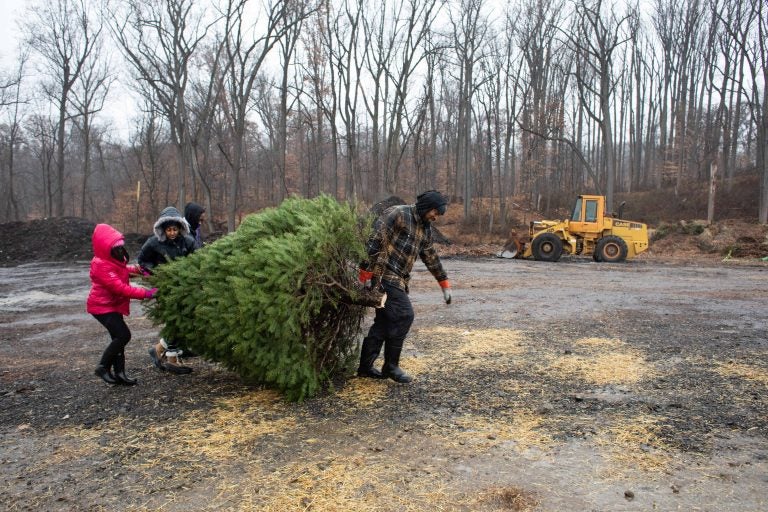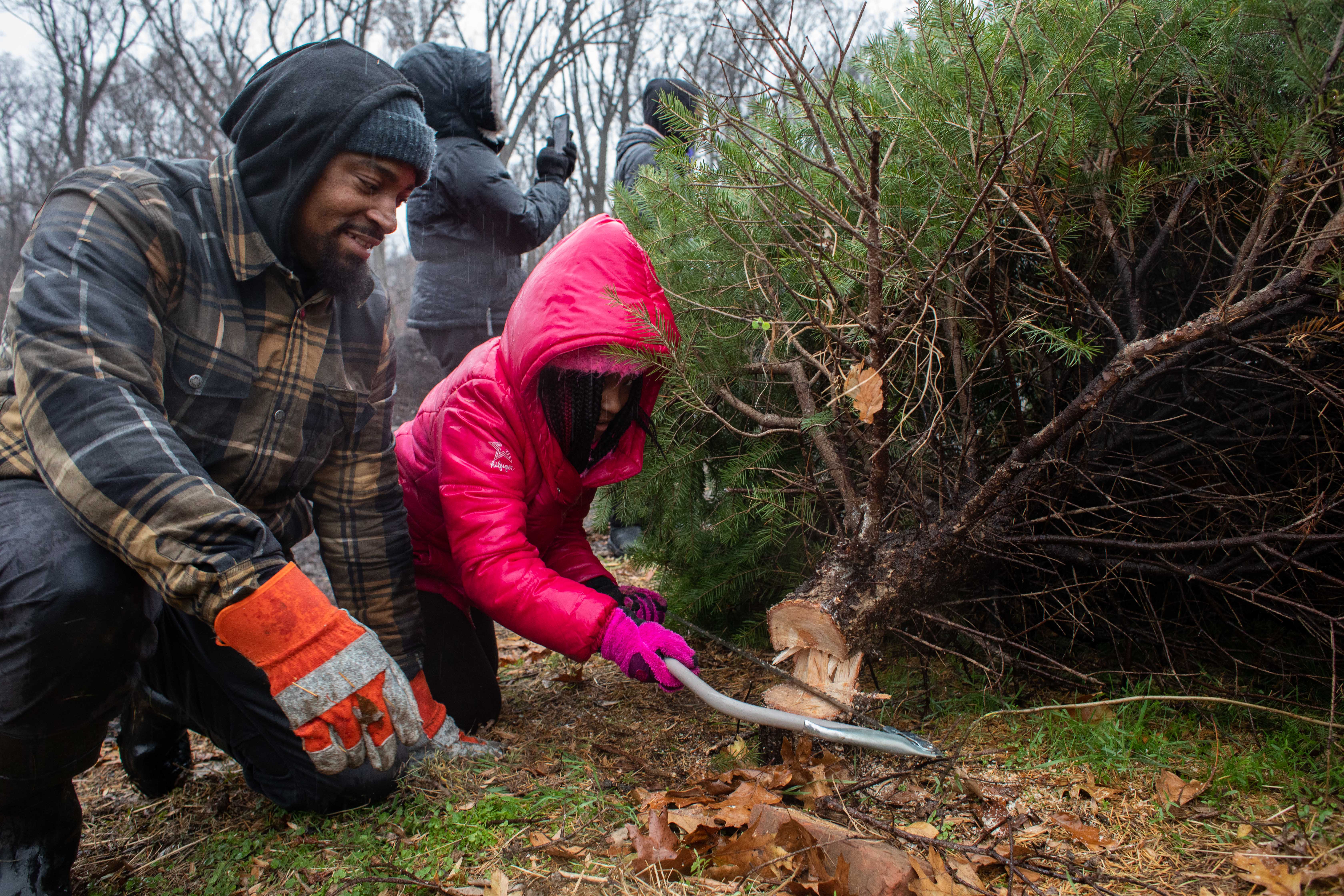You can thank the Great Recession for 2019’s Christmas tree shortage
This is the third year farms have fewer trees to sell because they planted fewer during the recession. Ten and 12-foot trees are the most scarce.

The Lynard family carries their Christmas tree at Linvilla Orchards in Media, Pennsylvania on Sunday. (Becca Haydu for WHYY)
For the third year in a row, families and Christmas tree farms across the region are bracing themselves for a shortage of trees, and you can blame the 2008 recession, as well as local weather.
“It’s a problem if people can’t get a tree one year because they’re likely to buy an artificial tree,” said Mary Gruber who helps run Old Stone Farm in Chester County, near the Maryland border. “And then you’re not going to see them coming back in the future because they’re going to be pulling out the plastic tree each year.”
The shortage, as well as fewer weekends between Thanksgiving and Christmas this year, made way for a very busy start of the season for Old Stone and other local tree farms.
Gruber said Old Stone sold hundreds of conifers since Friday and they will probably only have enough stock for one more weekend.

The supply pinch Old Stone and other farms are dealing with has been a long time coming. When families clutched their paychecks tightly during the economic downturn, farmers across the country planted fewer seedlings.
Because Christmas trees grow at an average rate of a foot per year, the public only started to harvest in 2017 trees planted during the recession.
Regional weather issues in the past decade only heightened the problem. Gruber said farms experienced greater than usual losses after a season of heavy rain roughly seven years ago. She said the downpours “suffocated” the young trees.
Farmers are not only working with smaller quantities of trees, but the trees are also shorter, said Gruber.
“I had half a dozen calls for 12 to 15-foot trees which a lot of people don’t have anyway, but something that tall, you better grab it quick if you’re lucky to find one — and it’s going to be very expensive,” she said.
The Lynard family wasn’t in the market for a tree that tall Sunday, but they weren’t taking any chances, having read about the tree shortage.
The family made sure to make the trip from Cherry Hill, New Jersey to Linvilla Orchards in Media, Pennsylvania to personally cut their tree despite the pouring rain.

“We knew that if we didn’t come out (today) that by the time we were able to come, there wouldn’t be any options,” said Zaahira Lynard as she trekked through fields of Christmas trees with her husband and two daughters to find the perfect conifer.
This is the third year the Lynard family has made the pilgrimage to Linvilla and daughters Gabbi and Mackayla said they’ve noticed a change.
“Not much big trees,” said ten-year-old Gabbi as she looked for a ten-footer. “A little bit more small ones.”
The Lynard family found the perfect eight-foot tree and ended the day with some fresh apple cider, as did dozens of other families.

Linvilla manager Norm Schultz said the farm only really starts to feel the shortage when trying to order pre-cut Fraser firs — trees known for their needle retention and favored by big box stores because of their low prices. Schultz said the farm has thousands of six to eight-foot trees ready for harvest.
But farms with a smaller stock of trees have dipped their toes into agritourism to draw more visitors.
Katie Brunt-Avunduk works at Sandy Creek Christmas Tree Farm in Burlington County, New Jersey. Arson struck Sandy Creek twice last year and this December marked the farm’s first year back.

Brunt-Avunduk said the farm sold hundreds of trees the weekend after Thanksgiving but has made it a point to offer more than just evergreens.
The family is not only selling wreaths and ornaments, but it’s also offering pictures with Santa, s’ mores by the fire, and horse carriage rides.
“Now I think you’re seeing a change of people wanting to go out weekends with their kids, experiencing fun activities like going to see Christmas tree farms, going out with a saw and chopping it down, and roasting s’mores, and just spending time with their parents,” Brunt-Avunduk said.
WHYY is your source for fact-based, in-depth journalism and information. As a nonprofit organization, we rely on financial support from readers like you. Please give today.





